Bourgogne VIII :Domaine du Chateau de la Tour
- Paolo Mittiga

- Jul 8, 2019
- 5 min read

Chateau de la Tour is the largest land owner within Clos de Vougeot. We had an appointment for a tour of the cellar and and a wine tasting. We drove from Beaune on a clear , beautiful but hot day in June 2019. The view of the Clos was spectacular, you could feel and imagine the monks working the land over a thousand years ago. As we enter the Chateau la Tour we got excited by the quaintness of the place, the Chateau was in a perfect condition, we felt being thrown back in medieval time until our gracious host brought back to reality; as we started the tour and heard about the history of the area and of the estate.
With its 5.48 hectares of vines, Château de la Tour is the largest landowner in Clos de Vougeot. (Incidentally, Clos de Vougeot is the name of the cru, while most of its wines are labeled Clos Vougeot or, as in the case of Château de la Tour, Clos-Vougeot.) Château de la Tour is also the only owner that produces their Clos Vougeot within the actual walls of the Clos (including the château and grounds, Château de la Tour actually owns six hectares of surface). It has been in the hands of the Labet family and their ancestors since 1889, making it one of the oldest ownerships in the Clos.
The château itself, which dates back to 1890, is the “other” edifice in the Clos, situated along the northern wall of the Clos, roughly in the middle of the slope. It enjoys a striking view of the considerably larger Château de Clos Vougeot, the famous monastic cellar built in the 12th and 16th centuries in the slightly higher northwest corner of Clos de Vougeot that is now the headquarters of the Confrérie des Chevaliers du Tastevin.
The main holding of the Château de la Tour is a large parcel that extends south from the chateau and then opens out to the west (toward the top of the Clos) and east (toward the Route Nationale at the bottom) in the center of the Clos (think of a T, or two contiguous rectangles). The estate also owns a prime parcel called Treize Ouvrées at the top of the Clos, just to the south of the Château de Clos Vougeot and close to Grands-Echézeaux, as well as two skinny strips of land (one just five vine rows wide and the other six) on either side of the Domaine Jean Grivot parcel at the bottom of the cru, on heavier soil extending up from the Route Nationale.
The Post-French Revolution History of the Estate
The sole owner of the Clos de Vougeot from 1815 to 1889 was Jules Ouvrard, who was also the owner of Romanée-Conti from 1819 through 1869. (Ouvrard was the fourth owner of the Clos de Vougeot in the barely quarter-century since the outset of the French Revolution; the first owner actually lost the property after defaulting on the payment soon after winning the auction for it.) The monopole was broken up in 1889 (Ouvrard had died in 1860, but the property remained in his family), and Alphonse Beaudet, whose Beaune-based négociant firm Maison Beaudet Frères had been a major purchaser of Clos de Vougeot bulk wine, snapped up significant acreage from one of the Ouvrard family’s six original buyers. As Beaudet lost the right to use the original chateau to bottle his wine, he constructed his own smaller facility in 1890 so that he could still claim to make chateau-bottled Clos Vougeot.
Alphonse’s son Charles, born in 1875, then sold the property to Jean Morin of Nuits-Saint-Georges in 1921 after having lost a lung to poison gas during World War I. In 1925, Charles’s daughter Madeleine married Jean Morin—in other words, the daughter of the previous owner married the son of the new owner and thus the holding in Clos de Vougeot never left the family.
Jean Morin then had two daughters who married into the Labet (in 1951) and Déchelette families. At the time, Pierre Labet had his own small négociant company, distillery and vineyard in Beaune, selling his wines under the name of Maire et Fils. He eventually established Domaine Pierre Labet in 1978 from vineyards carved out of the négocianthouse.
The Reign of François Labet
Pierre Labet’s son François took over direction of both Château de la Tour and the family estate in 1984. He was actually the first member of his family—which dates back at least 500 years in Nuits-Saint-Georges—to direct viticulture and winemaking in the Clos de Vougeot, as formerly the property was always run by resident managers. Labet began vinifying with whole clusters in 1987, the same year he began working with the controversial Lebanese-born enologist and soil chemist Guy Accad. . When Labet moved on from Accad after 1991, he went essentially to 100% vendange entier but shortened the duration of his maceration à froid, using temperature control to chill the must—he purchased his first heat exchanger for his concrete tanks in 1984—rather than sulfites to forestall the onset of fermentation. Today the cold soak lasts between seven and ten days for the early-arriving fruit, as the concrete vats tend to be around 10 degrees C., but goes more quickly toward the end, by which point the cuverie is teaming with yeasts. (Labet works entirely with indigenous yeasts and was one of the first owners in Clos de Vougeot to farm his vineyards organically, beginning in 1992.) Labet also became more flexible about fermentation temperatures, allowing them to rise to 29 or 30 degrees C., compared to the 26 or 27 degrees during the Accad years.
Labet has always avoided post-fermentation maceration for fear of getting harsher stem tannins. And in more recent years, he has exerted a lighter hand with extraction during vinification “due to riper fruit these days.” Many Burgundy insiders, including Labet, believe that Clos de Vougeot has particularly benefited from climate change, which has enabled vineyard owners here to get their grape skins fully ripe in most vintages and to make dense wines with less early herbal character and muscularity and more refined tannins.
Château de la Tour’s Special Vieilles Vignes Bottling
A roughly one-hectare parcel of vines planted in 1910 in the center of the Clos (the southernmost portion of Château de la Tour’s largest holding) has been the source of the estate’s Vieilles Vignes bottling since its first vintage in 1986. The soil here is relatively deep, with about 90 centimeters of topsoil overlying a substratum consisting of salmon-pink continental sedimentary deposits from the Oligocene era, between 23 and 34 million years ago. These deposits in turn were the result of the accumulation through erosion of calcareous and marly sediments from the much older Jurassic age.
The 2010 release of this special cuvée was called Vieilles Vignes de 100 Ans, celebrating the centennial year of these vines, and the 2011 through 2014 vintages were labeled Vieilles Vignes de Plus de 100 Ans. But beginning with the 2015 vintage, this special cuvée is now being made from 70+-year-old vines from multiple parcels, as François Labet initiated a plan to replant the old vines from 1910 over the next ten years; he also undertook a replanting project in his vineyard at the top of Clos after the 2016 harvest. So beginning with the ’15 release, the wine will once again simply be labeled as Vieilles Vignes.
The wine we drank were in part from the nego business in a Beaune from the Domain Pierre Labet ; of course the star was the Gran Cru Clos de Vougeot from the Chateau La Tour.
The Wine was garnet in color with a medium viscosity (13.5% abv) the nose offered a lovely cherry and blackberry coupled with spices and the palate a juicy texture and a mineral finish. It was truly delicious and enjoyable now but of course it could be cellared for at the least 10 more years. A classy wines. The cost over $250
As we left the Chateau we drove to a in depth visit to the Clos de Vougeot that I already described in a prior blog. We had another appointment in the afternoon to complete the area at the Domain de la Vougeraie. This to the next blog ... Follow us
















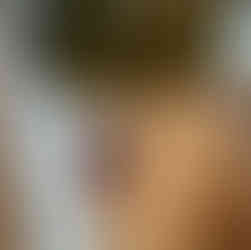















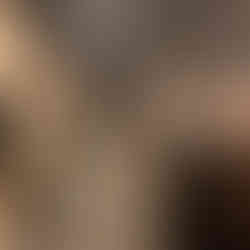









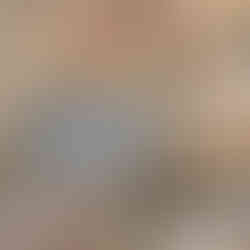

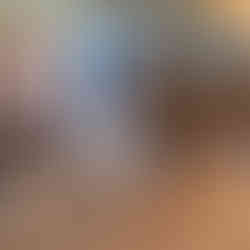
















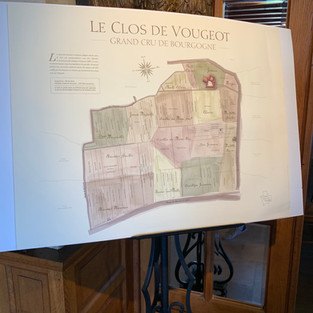

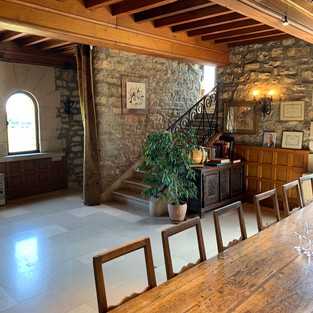








Comments